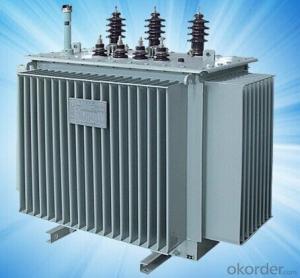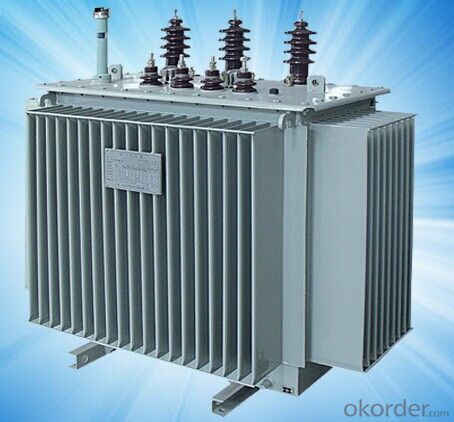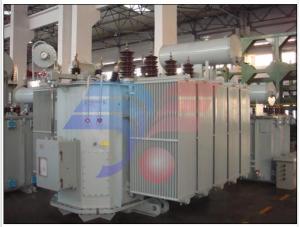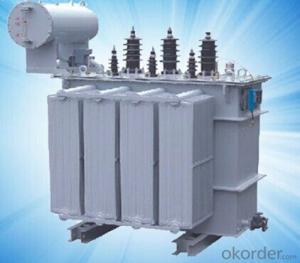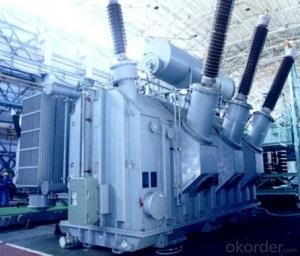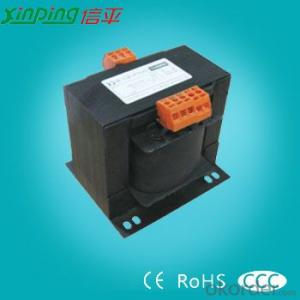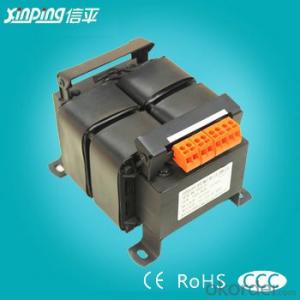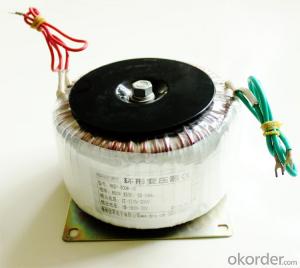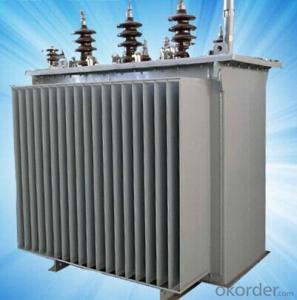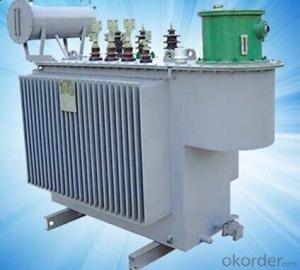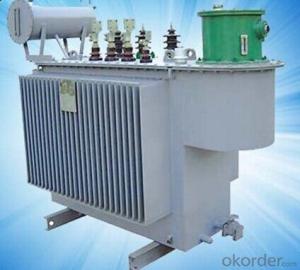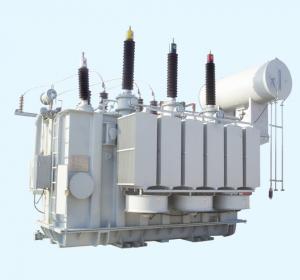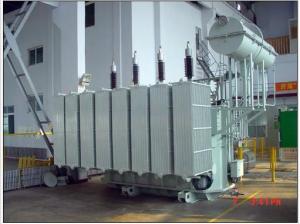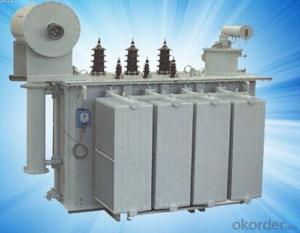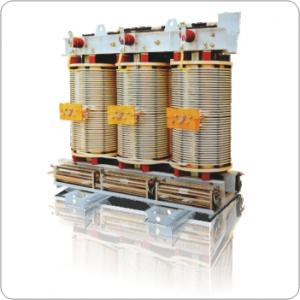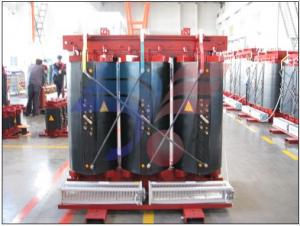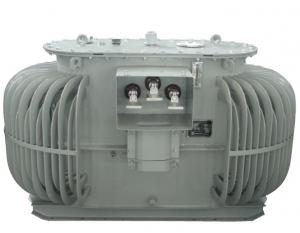S11-M.R-30~2500/10KV Three Phase Scrolliron Core Distribution Transformer
OKorder Service Pledge
Quality Product, Order Online Tracking, Timely Delivery
OKorder Financial Service
Credit Rating, Credit Services, Credit Purchasing
You Might Also Like
S11-M.R- 30~2500/10KV three phase scrolliron core distribution transformer is suitable for distribution system with 10KV.50HZ for industrial and mine enterprise and power illimination.It confirms to GB1904<power transformer>standard.
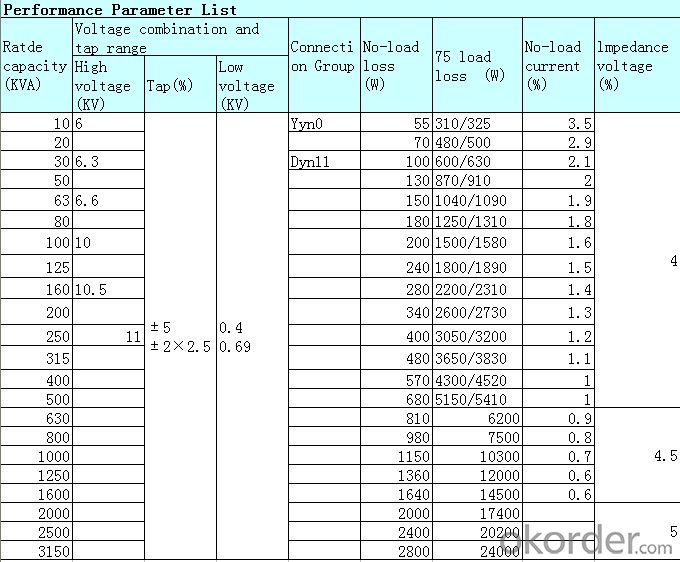
- Q: I have a US microscope (110v) with a built-in transformer using a 6v, 10w lamp. I want to use this with a 220 v supply. What are the specifications for the cheapest (external) transformer I can use for this purpose?
- You do not say what country you are in, so cannot give you links to an exact transformer. You are looking for a 220 to 110V step-down transformer. I am assuming you are going to plug the microscope into the transformer, rather than actually replacing the transformer in the microscope? The rating should be at least 10VA, personally I would go for at least 15VA for safety. That is quite a low rating and if you are lucky, you might be able to find a transformer meant for electric shavers really cheaply that should do the job. There is just one thing that concerns me, are you sure the transformer will only be powering the light and nothing else? If so, you will need a transformer that will handle a greater load. Somewhere on the microscope, or the PSU, or even it's box, there should be a rating Label, you can take the power supply rating from that. It is NOT true that VA Watts, but for something needing so little power, it should be near enough to give you the minimum rating. Good luck!
- Q: i want to know what you think transformers 3 will be about i think unicron will want to eat cybrotron and decticons and autobots work to get her to protect cybertron
- even if you do close your eyes whilst the Albert Einstein robotic is done it made me experience ill to my abdomen undesirable guy.yet different than that the action picture grew to become into candy Bumblebee and Optimus kicked butt. 8 out of 10 for me. R.I.P Wheeljack
- Q: What is the maximum current of the 800KVA transformer? What is the current? Is how to calculate, ask you master
- This type of capacity of the transformer for the distribution transformer, that is, step-down transformer. Voltage combination to 10 / 0.4 for multi-purpose. Transformer high side current 46.19A, low side current 1154.73A. Rated capacity = 1.732 * rated voltage * rated current
- Q: 1000KVA transformer power loss is how much
- Transformer no-load plus stray loss is fixed, usually 6% of the total capacity, load loss that is copper loss, according to the load power, and power factor calculation
- Q: I have a friend who lives in a place that she converted to a liveable space at a movie studio complex; however, the space is right above the transformer used by the studios for power. At night we can sometimes hear some buzzing sounds. How dangerous is this? We've heard things like it causes cancer in the long run, and that it is simply not safe. Does she have to worry about it? She's been there about two years.
- Transformers can produce powerful electromagnetic fields, but there is no definitive answer on the safety of living next to transformers. Some people believe the electromagnetic fields cause health problems, and others do not. Bona fide research on health risks has produced sometimes contradictory results. One thing is for sure, high capacity transformers occasionally explode if they get overloaded, but these types of transformers are not allowed inside of buildings.
- Q: Why is the transformer coil insulation?
- Because the transformer is used in different environments, according to different insulation level selection, can extend the life of the transformer. Transformer (Transformer) is the use of electromagnetic induction principle to change the AC voltage of the device, the main components are primary coil, secondary coil and core (core). The main functions are: voltage conversion, current conversion, impedance conversion, isolation, voltage regulator (magnetic saturation transformer) and so on. According to the purpose can be divided into: power transformers and special transformers (electric furnace change, rectifier, frequency test transformer, voltage regulator, mine transformer, audio transformers, IF transformers, high-frequency transformers, impact transformers, instrument transformers, electronic transformers , Reactors, transformers, etc.). Circuit symbols commonly used as the beginning of the number. Example: T01, T201 and so on.
- Q: If you have two 12 volt transformers and if we connect their hot wires together does the voltage become 24 or 12 volts? Please help, thanks so much!lt;3
- You asked the same question before. Here is the only correct answer again. There is actually a phasing to the transformer windings. If you connect them in series with the phases adding (both hit + 12 at the same instant) you get 24 volts out. If you connect with the phasing wrong (one hits +12 while the other hits -12) and put them in series the output will be zero volts (and they might overheat). If you connect them in parallel with the right phasing you will get 12 volts and the amperage will add to give you the sum of their amperage. If you connect in parallel with the phasing wrong you will get zero output voltage (and the danger of overheating). If the transformers do not make their phasing clear put a voltmeter on the output and briefly turn on the primary while seeing if you get zero or the voltage you want. If the phasing is wring swap the wires of one transformer around and check with the meter again. As long as the phasing is correct there is no problem with either series or parallel. A lot of commercial equipment is made with two low power transformers because two smaller ones are often cheaper commodities to buy than one special-order larger one.
- Q: 220 volts to 24 volts transformer 20a is how many watts
- Transformer consists of iron core (or core) and coil, the coil has two or more than the winding, which connected to the power supply winding called the primary coil, the rest of the winding called secondary coil. It can transform AC voltage, current and impedance. The simplest core transformer consists of a core made of soft magnetic material and a coil of two turns on the core, as shown in the figure. Turn left to turn right The role of the core is to strengthen the magnetic coupling between the two coils. In order to reduce the iron in the eddy current and hysteresis loss, the core from the painted silicon steel sheet laminated; between the two coils there is no electrical connection, the coil by the insulated copper wire (or aluminum) A coil connected to the AC power supply is called the primary coil (or the original coil), and the other coil is called the secondary coil (or secondary coil). The actual transformer is very complicated, inevitably there is copper loss (coil resistance heating), iron loss (core fever) and magnetic flux leakage (by air closed magnetic induction line), etc., in order to simplify the discussion here only describes the ideal transformer. The ideal transformer is set up under the condition that the leakage flux is ignored and the resistance of the original and secondary coils is ignored. The loss of the core is ignored and the no-load current is ignored (the current in the secondary coil turns the original coil). For example, when the power transformer is running at full load (the secondary coil output rated power) is close to the ideal transformer situation.
- Q: i wanted to know what the new transformers movie about?
- its about transformers.
- Q: Will the 250KVA, 500KVA, 630KVA Van transformer size,
- Box transformer inside the configuration is not the same, the size will be different, which factory production size is not the same
Send your message to us
S11-M.R-30~2500/10KV Three Phase Scrolliron Core Distribution Transformer
OKorder Service Pledge
Quality Product, Order Online Tracking, Timely Delivery
OKorder Financial Service
Credit Rating, Credit Services, Credit Purchasing
Similar products
Hot products
Hot Searches
Related keywords
